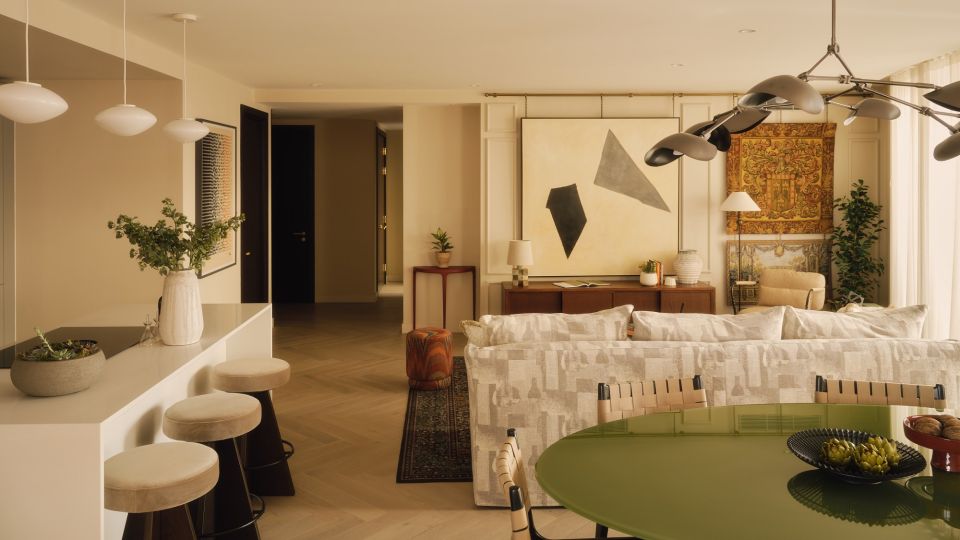
The Turnkey Effect: Why Fully Finished Homes Are Commanding Attention in Prime Central London

By Keir Waddell, Head of Private Client Department

Turnkey homes have long been a fixture of the Prime Central London (PCL) landscape. But over the past 18 months, we’ve seen a significant shift—not just in the number of turnkey properties coming to market, but in the expectations buyers now place on them.
Today, ‘turnkey’ no longer simply means beautifully refurbished. It increasingly implies a fully considered, move-in ready home where layout, materials, furnishings and functionality have all been professionally designed and delivered. These properties are not just finished—they are complete. And for a growing number of PCL buyers, that completeness is not a luxury, but a baseline requirement.
A Change in Buyer Behaviour
New data from our Housing Future survey reveals that 17% of London buyers now favour properties that require no additional work. This figure rises significantly in the prime and super-prime segments, where convenience and time-saving have become defining factors in the decision-making process.
This isn’t simply a preference for polished interiors. It reflects deeper market dynamics: rising construction costs, a shortage of reliable trades, and the increasing complexity of managing refurbishments—particularly for international buyers or those with demanding professional lives. In a competitive market, a turnkey home allows for speed, certainty, and a frictionless transition—qualities that are increasingly valued across buyer profiles.
On the ground, we have seen buyers in recent months willing to pay up to a 20% premium for something turnkey over a similar property needing work. This is less about the cost of any works needed which would be minimal and more about a shift in mindset, time and energy is a high price for these buyers in today’s market.
Who’s Driving the Demand?
The strongest demand for turnkey homes in PCL currently comes from three distinct buyer groups.
1. International UHNWIs
London remains a preferred location for international wealth, particularly from the US, Middle East and Southeast Asia. While motivations vary—from educational bases to lifestyle to business—it’s clear that buyers are looking for properties that are both luxurious and immediately usable. A well-executed turnkey offering allows them to establish a presence in the city without delay or disruption.
The recent influx of US-based buyers has been particularly noticeable, with favourable exchange rates and political considerations acting as accelerators. These clients often purchase with a clear sense of purpose and expect a home that meets that brief from day one.
2. Domestic Professionals
Time-poor London-based buyers—senior executives, entrepreneurs and those in the creative industries—are increasingly seeking move-in ready properties. Renovation is not only a time commitment, but a mental load that many would prefer to avoid. For these buyers, turnkey properties are practical as much as they are aspirational.
The growth of “compound living” also reflects this mindset: amenities such as gyms, concierge services, and private dining spaces are no longer seen as bonuses, but as expected features within certain developments. These offerings complement the turnkey lifestyle, providing ease and flexibility in day-to-day living.
3. The New-Style Pied-à-Terre
The post-pandemic rebound has brought renewed interest in London pieds-à-terre. But what constitutes a second home has changed. Many of today’s buyers are looking for larger, more versatile apartments that can accommodate multigenerational family use or hybrid working patterns. A three- or four-bedroom turnkey apartment now makes more sense than a minimalist one-bedroom unit—particularly when it’s designed for immediate use with minimal maintenance.
The Developer Response
In both new build and high-end refurbishment projects, developers are responding to these buyer behaviours with increased attention to interior presentation. We’ve seen a significant rise in the number of show apartments being fully dressed and presented with bespoke interiors, not just staged to suggest potential but curated to reflect a complete lifestyle.
This trend isn’t about ostentation. It’s about reducing uncertainty. A fully finished property allows buyers to see, feel and assess what they’re purchasing—without needing to imagine what might be.
The rise of branded residences—where homes are delivered with interiors, services and facilities aligned to an established hospitality or design brand—is one example of how this idea is being extended. In these cases, turnkey doesn’t just mean fully furnished—it implies a certain standard of living, a degree of service, and a trust in the delivery.
The Trade-Offs—and the Opportunities
For sellers, the message is clear: where appropriate, investing in a high-quality, thoughtful refurbishment can translate into stronger pricing and faster sales. The market appetite is there, but so are the expectations. Buyers are more discerning, and the quality of finish must support the premium being asked.
At the same time, it’s important not to over-commodify the product. One of the key challenges in turnkey development—particularly in the super-prime bracket—is preserving a sense of individuality. Buyers still want homes that feel personal, not generic. There’s a fine balance between broad appeal and meaningful character, and the best turnkey properties manage to deliver both.
Looking Ahead
The popularity of turnkey homes in Prime Central London is unlikely to fade. If anything, it reflects broader shifts in how people approach home ownership—especially at the top end of the market. Time, convenience, and certainty are now as important as location, space and specification.
As this part of the market continues to evolve, we expect to see even greater emphasis on the holistic delivery of property—where layout, interior design, service infrastructure and amenity all work in concert. For buyers, this is not simply about aesthetics. It’s about reducing complexity. And in that sense, the rise of turnkey is part of a much wider story about how the priorities of wealth are changing.
For advice on how best to navigate this landscape - whether buying, selling or developing - our Private Client Department would be happy to assist, contact the team here.
